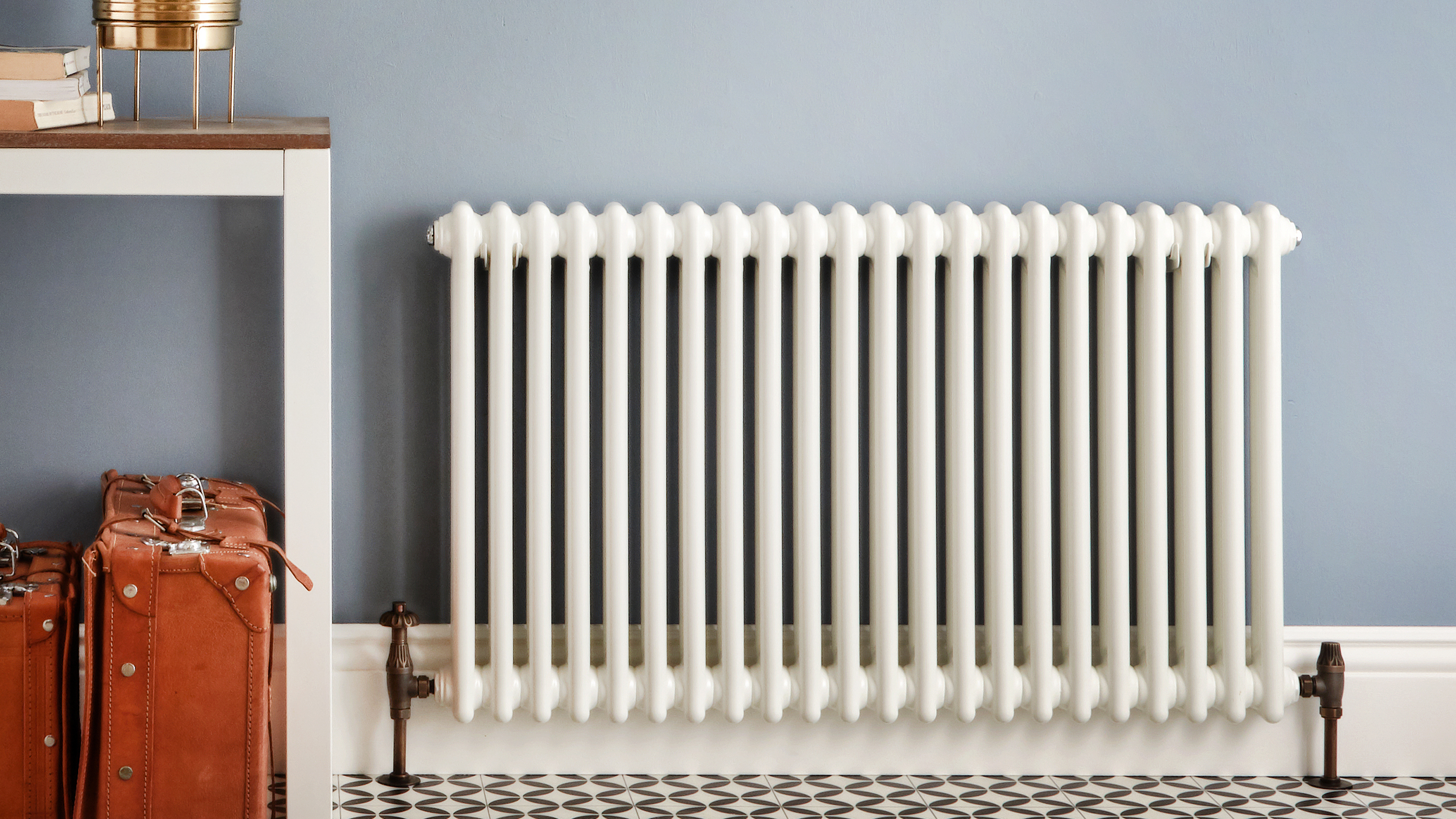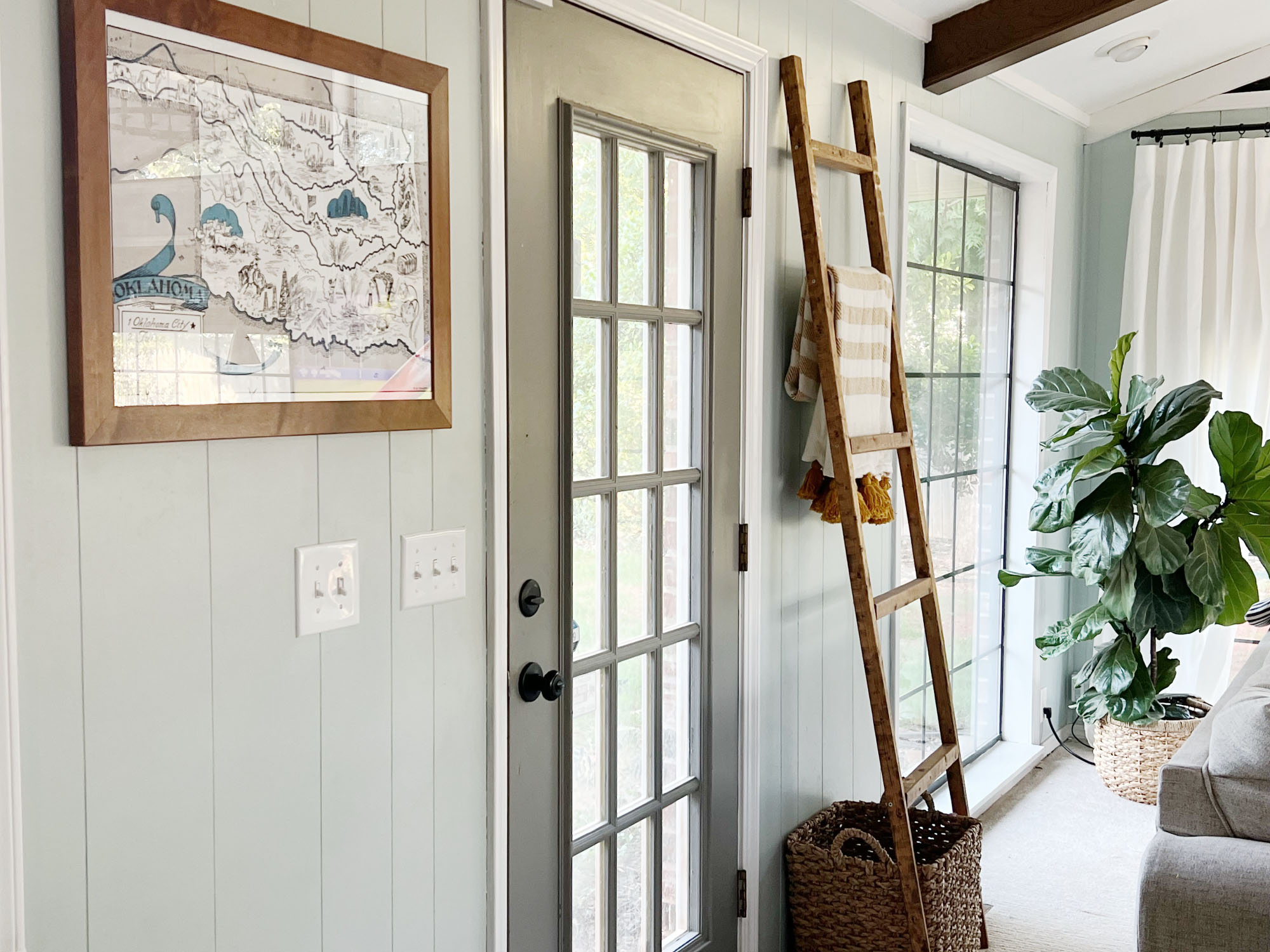

Finding that some of your radiators heat up fast and others take a while? Then you might need to know how to balance radiators in order to sort out the issue.
When radiators aren’t balanced they don’t all heat up at the same speed, leaving some rooms colder than they should be. The cause? Water from the boiler isn’t distributed evenly, leaving some of them colder while others are hot.
If yours is a home with a heating system that features radiators, use our expert guide to find out if they’re unbalanced and, if that’s the case, how to balance radiators.
How to balance radiators
Before finding out how to balance radiators, it’s important to be aware that balancing is different from bleeding.
So, how do you know if your type of radiator needs balancing? ‘If the radiators close to your boiler heat up very fast but the ones in other parts of your home take an hour or two to properly warm up, your radiators need balancing,’ says Kevin Jefferson of PlainHelp.
How to balance radiators
If radiators have cold spots at the top, or they’re noisy when the heating comes on, they need bleeding.
But bear in mind that it’s best to bleed before balancing them, so make sure you know how to bleed radiators, and get this done first.
Whichever you chose, these are the steps to follow when you need to follow to balance radiators.
Tools and materials:
- Lockshield valve adjuster or adjustable spanner
- Screwdriver
- Digital thermometer or multimeter with thermometer
1. Turn the heating off
Begins by switching the heating off. Let the radiators cool down completely.
Leonard Ang, CEO of iPropertyManagement explains: ‘The key information you need to effectively balance your radiators is which ones heat up more quickly than others; this is a sign that they are getting more steam than the others.’ The same goes for radiators supplied with hot water by the boiler.
2. Make a list of the radiators
Note down all the radiators in your home. The reason? You will later need to note the order in which they heat up and writing things down is a whole lot easier than trying to remember.
While being mindful that it’s likely to be those near the boiler that get hot first, keeping track of them all is important.
3. Open radiator valves
Open the valves on each radiator in the house by turning them anticlockwise, remembering that there are two valves on each radiator. Manual valves and themostatic radiator valves (TRVs) can be turned by hand, while for a lockshield valve, you will need to remove the cap, then turn it with a lockshield valve adjuster or adjustable spanner. This lockshield key by Primaflow is a good pick from Amazon.
4. Turn the heating back on
With the radiator valves opened, turn the heating back on. On the list you made earlier, note down the order in which the radiators heat up. You might want to call on a family member to help you but, as mentioned above, it’s likely to be the one nearest to the boiler that is first.
5. Turn the heating off
Switch the heating off and, once you’ve done so, wait for the radiators to cool down completely once again.
6. Turn the heating back on
Switch the heating back on again and go to the fastest heating radiator in your home. Turn the lockshield valve clockwise to close it, then open by a quarter turn. Let it heat up then read the temperature at the pipe connected to the lockshield valve.
Next take the temperature of the pipe leading to the other valve (manual or TRV). Gradually open the lockshield valve until there is a difference of around 54ºF (12ºC) between this reading and the previous one. The lockshield valve temperature should be the higher one.
‘Allow a couple of minutes after each adjustment for the temperature to change,’ advises central heating expert Chris Harvey of Stelrad.
7. Repeat for remaining radiators
You will need to repeat this process for each of the radiators on your list working down the order.
How long does it take to balance radiators?
The size of your home and the number of its radiators will influence how long it takes to balance the radiators in your home.
‘It takes a few hours to balance your radiators properly,’ says Kevin Jefferson of PlainHelp.
‘There are cruder, quicker methods, but this one will make sure you get it exactly right,’ he says. And if you don’t have time to balance radiators, or you don‘t feel confident about doing it yourself, our advice is to call in a pro.
Join our newsletter
Get small space home decor ideas, celeb inspiration, DIY tips and more, straight to your inbox!

Sarah is a freelance journalist and editor writing for websites, national newspapers, and magazines. She’s spent most of her journalistic career specialising in homes – long enough to see fridges become smart, decorating fashions embrace both minimalism and maximalism, and interiors that blur the indoor/outdoor link become a must-have. She loves testing the latest home appliances, revealing the trends in furnishings and fittings for every room, and investigating the benefits, costs and practicalities of home improvement. It's no big surprise that she likes to put what she writes about into practice, and is a serial house revamper. For Realhomes.com, Sarah reviews coffee machines and vacuum cleaners, taking them through their paces at home to give us an honest, real life review and comparison of every model.
-
 A $200 fluted panel transformed my drab kitchen in just one weekend
A $200 fluted panel transformed my drab kitchen in just one weekendHow to install a fluted kitchen panel: A speedy and achievable DIY tutorial even for DIY novices
By Claire Douglas Published
-
 How to replace a broken staircase spindle in 30 minutes flat
How to replace a broken staircase spindle in 30 minutes flatA missing or broken spindle on a staircase is not only unsightly, but it can be a real hazard. This is how to fix it in a few quick steps.
By Kate Sandhu Published
-
 An IKEA Billy bookcase hack inspired this cute media wall DIY
An IKEA Billy bookcase hack inspired this cute media wall DIYThis cute DIY was inspired by an IKEA Billy bookcase hack and brought a ton of symmetry to an otherwise basic media wall space.
By Camille Dubuis-Welch Published
-
 Share your small space glow up to win $150 in the Real Homes competition
Share your small space glow up to win $150 in the Real Homes competitionShow off your creativity and DIY skills to win $150 and for the chance to be featured exclusively in Real Homes magazine
By Camille Dubuis-Welch Last updated
-
 This oversized headboard looks designer, and takes 5 steps to DIY
This oversized headboard looks designer, and takes 5 steps to DIYSuper simple to DIY, this oversized headboard will give your bedroom space all the designer vibes you could dream of.
By Claire Douglas Published
-
 My DIY range hood and backsplash build gave my kitchen the perfect farmhouse finish
My DIY range hood and backsplash build gave my kitchen the perfect farmhouse finishI craved charm in my kitchen space and adding a custom range hood and shelving was the best move.
By Brooke Waite Published
-
 How to paint a radiator in 7 steps
How to paint a radiator in 7 stepsPainting radiators properly is all about choosing the right paint and the best process. Get interior designer-worthy results with our how-to.
By Kate Sandhu Published
-
 How to install a door knob
How to install a door knobUpdating your interior and exterior doors can be as easy as changing out the hardware! The best part is that installing a door knob is very DIY friendly. Follow these simple steps and enjoy a fresh look on your doors!
By Dori Turner Published